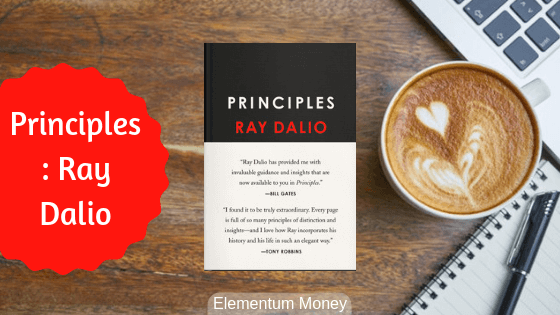
Thinking fast and slow is a legendary book which explores the intersection between psychology and economics. You might be wondering, how exactly do psychology and economics intersect? The book urges you to think of the rational human we encounter in our economics theory and the emotional humans that we encounter in real life. The psychology that creates these emotional humans is what the pair of Daniel Kahneman and (late) Amos Trovsky claim their fame to.
The book details decades of experimental work in psychological economics and while you might relate to some of their results, some results might make you ponder just a bit more.
In the book, the main premise is that there are 2 parts to a human brain – namely System 1 and System 2. System 1 answers to traits like emotional, impulsive, intuitive … while System 2 gets more of labels like careful, cautious, intelligent, deliberate and lazy. The title of the book is derived by these two systems and System 1 is the quick-on-your-feet Thinking fast whereas System 2 might be more thorough but makes for the thinking slow aspect.
Listed below are some points I found worth making a note of, followed by a supporting italicized quote from the book.
- Humans are inherently lazy
The book presents a law that if there are multiple ways to do a task, the human mind inherently gravitates to one that requires least action. While we have always known this to be true for us physically (most of us anyway), the book shows how it’s true for our intellect as well. For any task, we end up thinking with System 1, rather than use the resources of System 2.
So when doing something important, try not to be impulsive about it. There is merit in physically slowing down, trying to deliberate it in your head and thinking slowly on it.
We normally avoid mental overload by dividing our tasks into multiple easy steps, committing intermediate results to long-term memory or to paper rather than to an easily overloaded working memory. We cover long distances by taking our time and conduct our mental lives by the law of least effort.
- Self-control requires mental work
We often assume, naively, that mental work involves only complex calculations and long memory chains. We might be aware that multiplying 20 by 36 in our head, requires mental activity and so does recalling the name of the first man who climbed Mt. Everest.
However, it seems that exercising self-control of not eating the yummy looking chocolate cake when you are trying to lose weight, consumes much more glucose reserved for mental activity than thought of earlier. So much so, that experiments were done to show that while doing mentally taxing work like a complex mathematical sum, self-control takes a nose dive. People were more likely to reach out for a chocolate chip cookie than a carrot stick after having used their brain for a particular task.
It is now a well-established proposition that both self-control and cognitive effort are forms of mental work. Several psychological studies have shown that people who are simultaneously challenged by a demanding cognitive task and by a temptation are more likely to yield to the temptation.
- Possibility effect and certainty effect

Our possibility bias makes us buy lottery tickets
The possibility effect simply refers to the overweighing of small probabilities. Confused? Think about a lottery. Any ticket buyer has a probability of less than 1{76b947d7ef5b3424fa3b69da76ad2c33c34408872c6cc7893e56cc055d3cd886} to win the huge sum advertised in a lottery. But looking at the magnitude of the reward, enough humans cling on to hope and the minor probability of the win.
In life, the probability of a normal average life span is quite high, in the late nineties. However, when the stakes are so high, we would rather be certain of it and remove the remaining uncertainty by using an insurance policy.
What can you do about such biases? Continue playing to both these effects when the stakes are high enough.
These two effects are explained in a great example in the book:
To appreciate the asymmetry between the possibility effect and the certainty effect, imagine first that you have a 1{76b947d7ef5b3424fa3b69da76ad2c33c34408872c6cc7893e56cc055d3cd886} chance to win $1 million. You will know the outcome tomorrow. Now, imagine that you are almost certain to win $1 million, but there is a 1{76b947d7ef5b3424fa3b69da76ad2c33c34408872c6cc7893e56cc055d3cd886} chance that you will not. Again, you will learn the outcome tomorrow. The anxiety of the second situation appears to be more salient than the hope in the first.
- The effect of money priming
The concept of priming is essentially the influence on an action by a thought germinated in your head through an external stimulus recently. So, if you have been shown a picture of an old couple and then asked to walk a distance of say 100 metres, you will be much slower than if you had been shown a video of Usain Bolt sprinting to glory.
In the book, Kahneman describes some experiments where the thought of money was used as a priming factor. Through those experiments, the results concluded were that money priming nurtures individualism making respondents more self-reliant, reluctant to be involved with others and even selfish to a point.
Money-primed people become more independent than they would be without the associative trigger. They persevered almost twice as long in trying to solve a very difficult problem before they asked the experimenter for help, a crisp demonstration of increased self-reliance.
I found it a little difficult to digest the statement as it seemed to confirm to widespread stereotypes about money and people. However, some of the richest people are also the most benevolent with their wealth and often great leaders (which would involve them working with people). I strongly believe some core traits are unshaken by money and still retain my doubts on this finding. This article also refutes the robustness of the impact of priming.
- People will believe in something even if false, when repeated enough number of times
We humans love the familiar and even become less suspecting when we see something often enough. To me, the one thing that comes to mind is the controversy around the fake news that we often see becoming viral on social media. If fake news, seen in a familiar environment of personal social media accounts, could be responsible for swinging the presidential elections of the world’s most powerful country, it sure merits caution.
An actionable I take from this finding, is to not take anything on face value, even if seen repeatedly. Check before you believe.
The familiarity of one phrase in the statement sufficed to make the whole statement feel familiar, and therefore true. If you cannot remember the source of a statement, and have no way to relate it to other things you know, you have no option but to go with the sense of cognitive ease.
- Anchoring effect
If you have read even a basic treatise on behavioral finance, anchoring effect is bound to have been one of the foremost biases that you would have heard of. Anchoring is about seeing sequences and connecting the dots, even when there might be no connection to be made.
If Virat Kohli hits a century in the previous match, most viewers expect him to play a long innings in the current match, even though the two are pretty much unconnected. If a shop keeper at a flea market prices an item for Rs. 1000 we would be far more willing to pay Rs. 800 than if the original price was that any way.
What I found most interesting was that a physical gesture can impact our receptiveness to the anchoring effect. If you shake your head to the anchor that you might be hearing (for instance the price of the product), you are less likely to use it as a benchmark for your action. On the other hand, nodding the head to the anchor, ends up sealing its place in your head.
Might want to try it the next time you hear about a market crash?
Nick Epley and Tom Gilovich found evidence that adjustment is a deliberate attempt to find reasons to move away from the anchor: people who are instructed to shake their head when they hear the anchor, as if they rejected it, move farther from the anchor, and people who nod their head show enhanced anchoring.
- Risk Aversion
Another commonly known behavioral trait, we humans are averse to risk. Most of us do not know, remember or choose to remember probability.
When given an option of losing $900 for sure and a 90{76b947d7ef5b3424fa3b69da76ad2c33c34408872c6cc7893e56cc055d3cd886} chance of losing $1000, while probability dictates that both the values are theoretically the same, most humans would choose to take the risk of the gamble in a hope of not losing money.
However, if the same situation is reversed and you are given an option of getting $900 for sure or a 90{76b947d7ef5b3424fa3b69da76ad2c33c34408872c6cc7893e56cc055d3cd886} chance of winning $1000, you are more likely to choose the sure bet of $900. In this case, not winning the $1000 would seem more like a loss of the $900 you could have said yes to.
Look around you and there will be enough and more people refusing to invest in equities for a fear of losing money even though keeping the money only in cash inherently loses value any way. People refuse to sell losing stocks whereas enough of them “book profits” on rising stocks in a display of classic risk aversion.
How can you avoid it? Start investing earlier. Time horizon generally reduces the risk probability and telling yourself to just calm down and not track the volatility too frequently are some measures that should help.
Bernoulli observed that most people dislike risk (the chance of receiving the lowest possible outcome), and if they are offered a choice between a gamble and an amount equal to its expected value they will pick the sure thing. In fact a risk-averse decision maker will choose a sure thing that is less than expected value, in effect paying a premium to avoid the uncertainty.
- It is easier to be attracted to the bad, than to the good
Isn’t this a very instinctive theory? Remember how our parents were always wary of us getting into bad company? How many times have they really assumed we will just float into good company?
How many of us remember the smallest bad instance or interaction with someone, but a good interaction has to be so much bigger in magnitude to make a dent in our long-term memory. This is looked at as a broader impact of risk aversion.
Bad emotions, bad parents, and bad feedback have more impact than good ones, and bad information is processed more thoroughly than good. The self is more motivated to avoid bad self- definitions than to pursue good ones. Bad impressions and bad stereotypes are quicker to form and more resistant to disconfirmation than good ones.
- Narrow framing
We humans have a tendency to take a short-term view of things. Remembering the long-term required us to invoke System 2.
One of the most clear implications of narrow framing, is to not check the prices of your owned shares repeatedly. Especially when you hear of the market going down, the more frequently you check the share prices, more likely are you to panic and make a bad decision. Frequently checking share prices has also been shown to make humans even more loss averse.
You are also less prone to useless churning of your portfolio if you don’t know how every stock in it is doing every day (or every week or even every month). A commitment not to change one’s position for several periods (the equivalent of “locking in” an investment) improves financial performance.
- Goals make a large difference

Goals make a difference to our lives
This is a conclusion I have realized in the last year or so. The book describes an experiment with 12,000 respondents who were asked in the late 70s on the importance of financial well-being in their lives.
About 20 years later, the same people were asked to fill in another questionnaire, which checked with them on subjects of financial and global well-being. As per the study findings, most respondents who rated the goal of financial well-being as high on their list were happier 20 years later. However, this goal also led to dissatisfaction among people who had not achieved it.
To me, this study implied while goal-keeping has a place in life, just acknowledging the importance money can play is also a vital sub conscious switch you can make. As soon as you acknowledge money is important, the mindset definitely changes and can show in your actions as well.
Goals make a large difference. Nineteen years after they stated their financial aspirations, many of the people who wanted a high income had achieved it.
The importance that people attached to income at age 18 also anticipated their satisfaction with their income as adults.
Phew! This was an intense book and putting all my learnings out there for you to benefit from has used quite a bit of my System 2. Does it make you think a little bit more on the actions you make? Let me know in the comments or email me at aparna@elementummoney.com

Take your first step today. Sign up for the Elementum Money Weekly Newsletter to download the Financial Feminist checklist. Also,get nuggets of financial wisdom with our 3 posts every week, directly to your inbox. Have more questions, feel free to send any of them my way at aparna@elementummoney.com.
Related posts:





Leave a Reply